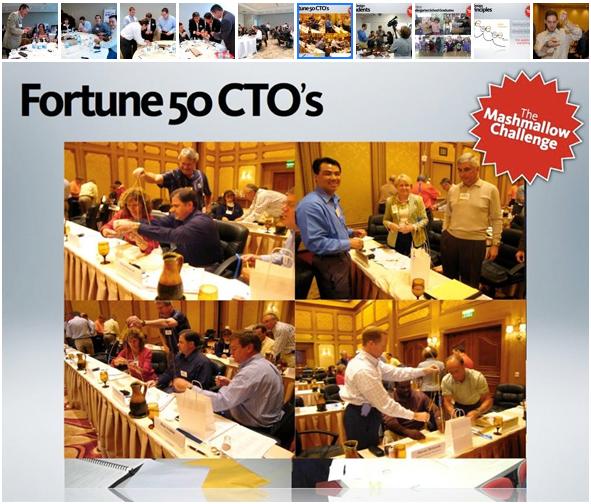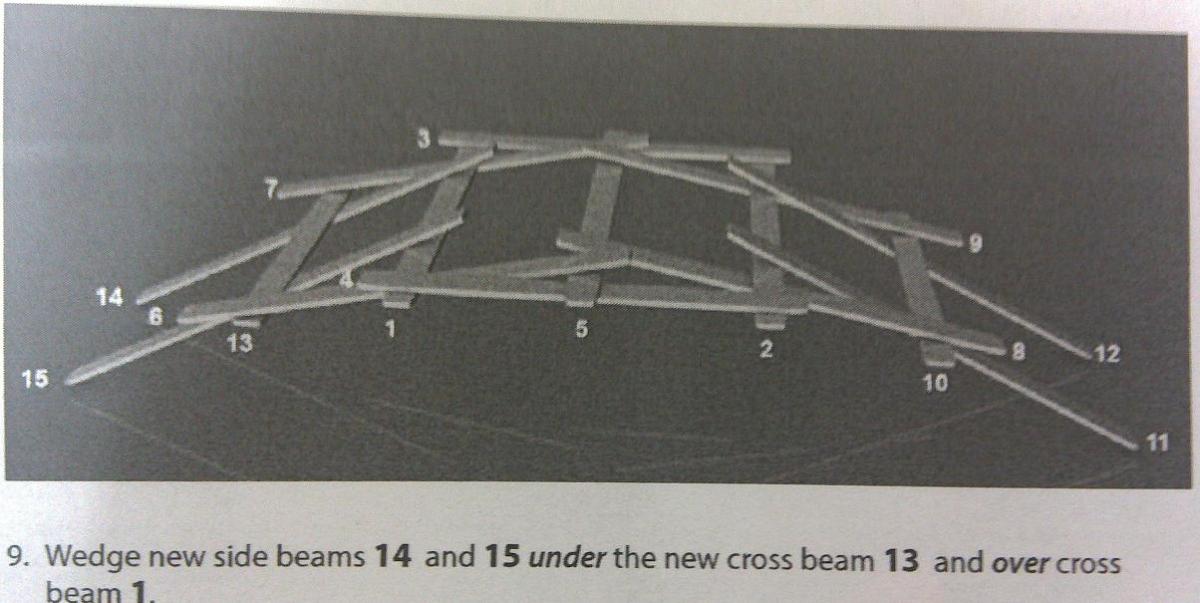Team building
The target of team building is high performance and the foundation of high performance is the owner like team with correct direction, clear responsibility and proper pacesetting. Five harms of team efficiency are doubt (Don't trust, no coperation, each does things with his own way), hide conflicts (Overtly agree but covertly oppose), no commitment, no conscience of ownership, no result (Not KPI oriented). When form a team (Forming), we must tell the team, what is the direction of the team and support the effective action when storming guiding team to norming and performance with proper momentum. Delagating enough is the key when it is in the performance phase to avoid overloading assuring suatainable work enthusiasm. In the early phase of one team, it must be supported by the leader with the absolute obeying of the subordinates (Coercive phase) and then get the authority (Authoritative phase). In the third phase, affiliative phase so called, we should consider the welfare of the team to set up a very good atmosphere encoraging all of the team members expressing their ideas. And then setup the proper pace for the team to guide the team conquering obstacles stepping forward to high performance.
Effective feedback
When we feedback the things to our direct report, we can use:
S ituation: Describe the particular circumstances in which the example you want to feedback occurred. You will be using this to highlight the context and demonstrate that you own the feedback by being a witness to it.
B ehaviour: Be specific about the behaviour. Quote the words used if possible, and describe the non-verbal language used as well, if appropriate. It is important that you remain factual and do not include or imply judgement.
I mpact: Describe the impact of effect the behaviour referred to above had -either on you, another colleague/client or on the situation you were all in. Again, there should be no judgement here, but if impact was a bad one, you need to be able to be clear about that.
SBI types: Motivational and developmental.
Remember not to use "Shit Sandwich" to address SBI. (Positive beginning + but developmental SBI + Positive ending)
Factors affecting performance
B ehavior
E nvironment
C larity
K nowledge &
S kills
BECKS is famous beer brand of Germany
Great Marshmallow challenge
Your Mission…….
The task is simple: in eighteen minutes, teams must build the tallest free-standing structure out of 20 sticks of spaghetti, one meter of tape, one Meter of string, and one marshmallow. The marshmallow needs to be on top.
The tools & Materials
✦Spaghetti - 20 pieces
✦String: - 1 Meter
✦Tape - 1 Meter
✦Marshmallow - 1 (on top hopefully)
✦Time - 18 minutes
Instructions
✦Build the Tallest Freestanding Structure: The winning team is the one that has the tallest structure measured from the table top surface to the top of the marshmallow. That means the structure cannot be suspended from a higher structure, like a chair, ceiling or chandelier.
✦The Entire Marshmallow Must be on Top: The entire marshmallow needs to be on the top of the structure. Cutting or eating part of the marshmallow disqualifies the team.
✦Use as Much or as Little of the Kit: The team can use as many or as few of the 20 spaghetti sticks, as much or as little of the string or tape. The team cannot use the paper bag as part of their structure.
✦Break up the Spaghetti, String or Tape: Teams are free to break the spaghetti, cut up the tape and string to create new structures.
✦The Challenge Lasts 18 minutes: Teams cannot hold on to the structure when the time runs out. Those touching or supporting the structure at the end of the exercise will be disqualified.
✦Ensure Everyone Understands the Rules: Don’t worry about repeating the rules too many times. Repeat them at least three times. Ask if anyone has any questions before starting.
Wrap up
•After the clock runs out, ask everyone in the room to sit down so everyone can see the structures. Likely, just over half the teams will have standing structures.
Marshmallow challenge lessons
Best Kindergarten School Graduates
Design students
Fortune 500 CTO's.
MARSHMALLOW CHALLENGE TRANSCRIPT
Several years ago, a design exercise called the Marshmallow Challenge was introduced. Its goal was simple: in eighteen minutes, teams of four must build the tallest freestanding structure out of 20 sticks of spaghetti, one yard of tape, one yard of string, and one marshmallow. The marshmallow has to be on top.Though the task seems simple, it's actually pretty hard. It forces people to collaborate quickly. So I decided to run it as part of a design workshop. And it was huge success. There was something about the exercise that reveals the true nature of collaboration. Since that first workshop, I've conducted over 70 Marshmallow challenges with designers, architects, students - even leadership teams of the Fortune 50.
Most participants discovered deep lessons on how to successfully they personally innovate. And I'd like to share some of these lessons with you.
LESSON 1:
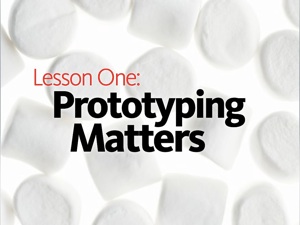
PROTOTYPING MATTERS.
Normally most people begin by orienting themselves to the task. They talk about what the finished structure might look like, and who does what. Then the team plans. They sketch, lay out spaghetti sticks and describe the best ways build the structure. Next, they assemble the sticks and tape them into ever growing structures. And finally, just as the time is running out, someone takes the marshmallow and gingerly places it on top of the fragile structure. They anticipate that they stand back 'ta-dah!!!' .But usually, the 'ta-dah' turns into an 'oh-oh!!' The weight of the marshmallow causes the structure to buckle and collapse .Some teams consistently have more 'oh-oh' moments than others. Among the worst are recent graduates of business school. It's actually amazing to watch them: They fight. They cheat. They produce lame structures.Some teams consistently have more 'ta-dah' moments. Among the better teams are recent graduates of kindergarten. Not only do they consistently produce taller structures, theirs look like trees, and elephants and spiders.But why? Peter likes to say that none of the kids spend their time trying to be CEO of spaghetti inc. But there's another reason. Business students are trained to create a single right plan, then execute on it. When they put a marshmallow on top and the structure topples over, there's no time to fix it and that creates a crisis! Sound familiar?
Among the worst are recent graduates of business school. It's actually amazing to watch them: They fight. They cheat. They produce lame structures.Some teams consistently have more 'ta-dah' moments. Among the better teams are recent graduates of kindergarten. Not only do they consistently produce taller structures, theirs look like trees, and elephants and spiders.But why? Peter likes to say that none of the kids spend their time trying to be CEO of spaghetti inc. But there's another reason. Business students are trained to create a single right plan, then execute on it. When they put a marshmallow on top and the structure topples over, there's no time to fix it and that creates a crisis! Sound familiar?  Kindergardners work differently. They build a little structure, add the marshmallow. They play around and add some more spaghetti stick. Again and again, they build prototypes each step of the way, always keeping the marshmallow on the top.
Kindergardners work differently. They build a little structure, add the marshmallow. They play around and add some more spaghetti stick. Again and again, they build prototypes each step of the way, always keeping the marshmallow on the top.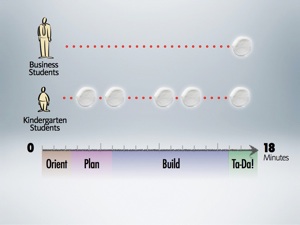 Designers recognize this type of collaboration as the essence of the iterative process - which is central to design thinking. With each version, the kids get instant feedback of what works and what doesn't. Through play and prototyping, they instantly adapt to what's in front of them.
Designers recognize this type of collaboration as the essence of the iterative process - which is central to design thinking. With each version, the kids get instant feedback of what works and what doesn't. Through play and prototyping, they instantly adapt to what's in front of them.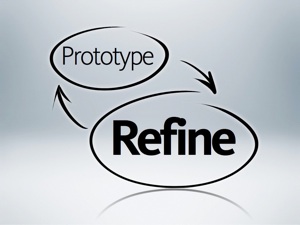
LESSON 2:
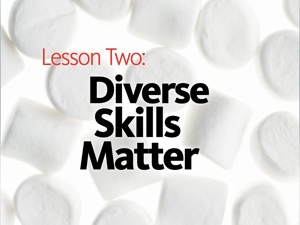 DIVERSE SKILLS MATTER
DIVERSE SKILLS MATTER
The capacity to play and prototype are important skills for innovation. But there are others too.
+ The average height for most teams is just over 20 inches.
+ Business students average about half.
+ Lawyers do a bit better. But not much better. Like business students, they spend too much time seeking power and making plans.
+ Kindergartners, as we've seen, do better than most adults.
+ And who does the very best?
+ Thankfully - Engineers and Architects - create the tallest stable structures. So far, the largest I've seen is 39 inches. Architects and Engineers have specialized skills and experiences. They know that triangles and self-reinforcing geometrical patterns produce the most stable spaghetti towers.
+ CEOs are bit better than average.
+ But here's where it gets interesting. If an executive administrator works with the CEO team, that team almost always wins. It seems that the admin's skills of facilitation makes a big difference. Any team member who pays close attention the process of work - encouraging timing, improving communication, cross pollinating ideas - increases the teams performance significantly.
Winning teams are specialists. But the next best are those with facilitation skills.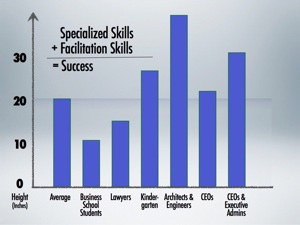
LESSON 3:
INCENTIVES MAGNIFY OUTCOMES
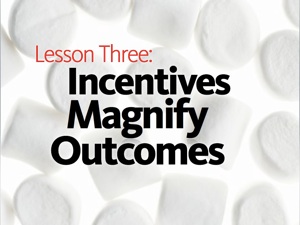 In management theory, there's a popular concept that incentive always improves performance. The marshmallow challenge tells us something else. Here's a typically performance curve for ten teams competing against each other. On average, six teams build standing structures and four fail.
In management theory, there's a popular concept that incentive always improves performance. The marshmallow challenge tells us something else. Here's a typically performance curve for ten teams competing against each other. On average, six teams build standing structures and four fail.  Some months ago, just as I was about to start a marshmallow challenge to a group of 40 design students, I thought, "Why not up the ante?" So I offered ten thousand dollars of software to the winning team. And so what do you think happened?
Some months ago, just as I was about to start a marshmallow challenge to a group of 40 design students, I thought, "Why not up the ante?" So I offered ten thousand dollars of software to the winning team. And so what do you think happened? Here are the results: Not one team had a standing structure. Every tower collapsed. If anyone had built, say, a one inch structure, they would have taken home the prize. Four months later, we tried again. This time the students knew about the value of prototyping. The teams went from being the very worst to among the very best. They produced the tallest structures in the least amount of time.
Here are the results: Not one team had a standing structure. Every tower collapsed. If anyone had built, say, a one inch structure, they would have taken home the prize. Four months later, we tried again. This time the students knew about the value of prototyping. The teams went from being the very worst to among the very best. They produced the tallest structures in the least amount of time.  So the lesson here is that incentives alone are not enough.High incentives with low skills can actually kill performance. But high incentives with high skills - specialized or facilitation - can lead to high success.
So the lesson here is that incentives alone are not enough.High incentives with low skills can actually kill performance. But high incentives with high skills - specialized or facilitation - can lead to high success.
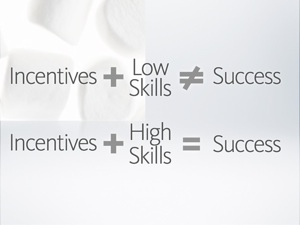
WHY CONDUCT THE MARSHMALLOW CHALLENGE?
So why would anyone actually spend time running the marshmallow challenge? I help create digital tools for teams who create cars, bridges, consumer products, movies and videogames and much more. The marshmallow challenge helps them identify hidden assumptions lurking within their real projects. Every project has its own marshmallow!!! The marshmallow challenge provides teams with a shared felt experience, a common language and a solid stance to find the right prototypes to build their real projects successfully, to avoid the oh-oh moments and have real ta-dah moments. If you're interested in running your own Marshmallow Challenge you can visit a blog called Marshmallow Challenge dot com - one word. You'll find instructions on how to run the challenge, strange and bizarre solutions, the results of challenges from around the world. And if you conduct a challenge, you can share your experiences with others. The fundamental lesson, I believe, is that Design is a contact sport. It demands that we bring all of our senses to the task and applying the very best of our thinking, feeling and doing to the challenge. Sometimes a little prototype of this experience is all we need to take us from oh-oh to ta-da.Thank you.
How to coach
Definition and meaning
Coach is using silence, questioning and challenge to assist a coachee towards a target.
Coaching enables people to perform better by building on what they already know. (Story Andrian Moorhouse)
Coaching is unlocking a person's potential to maximise their own performance. It is helping them to learn rather than teaching them.
When to coach
When an individual or team knows the job conetent but can improve on their results
When motivation is poor
Before key events
Following key events
When no one knows the answer
When they are more expert than you
And ......
The GROW model
G oal: what is the target you want to reach, issue needs to be resolved etc.
R eality: what is happening at the moment? What is stopping you achieve what you want to achieve? What is happening that could help you sort this issue out?
O ptions: What aotions do you have? What is a quick win? What are the priority actions that address the important issues?
W ill: What are you going to do? By when? What support do you need?
The precondition of coach
If one does not believe you, never try to use coach.
How to get the trust from the others
The process you get trust is the process you have risk because you have to disclose yourself from discussing the weather to the emotion and feeling.
During the process, we have 4 phases. The first phase is that we discuss the weather or duck day and then the second level of trust is sharing the information such as talking the family and interest. The third level is sharing the opinion or exchanging the belief. The highest level of trust with the highest risk and disclosure is that the feeling and emotion are shared.
Interview process of TOP 500 enterprises in the world
STEP1: Prpeparation of JD (JOB DESCRIPTION)

The KEY is to make clear the role and responsibility.
STEP2:Target List or setup competence matrix
Some competences including Decision making,Planning and organizing,Initiating action,Applied learning,Communication,Customer focus and motivational fit etc. And Knowledge and experience should be incuded.
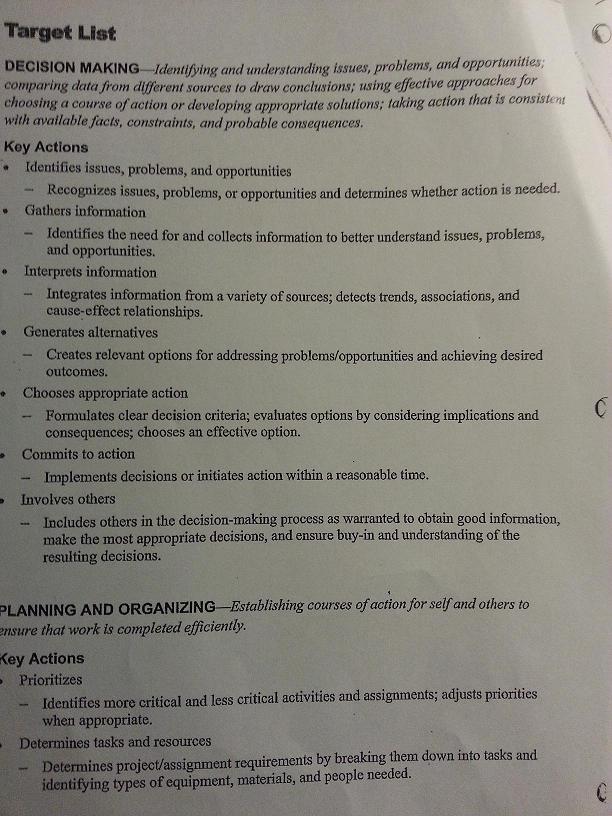
Competences or target: :Decision making and planned & Organizing
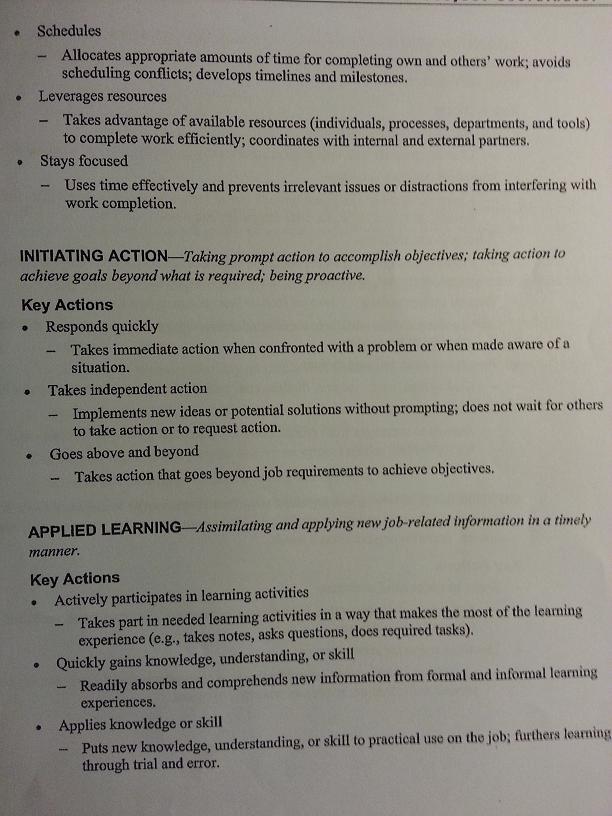
Competences and targets:Initiating action and applied learning
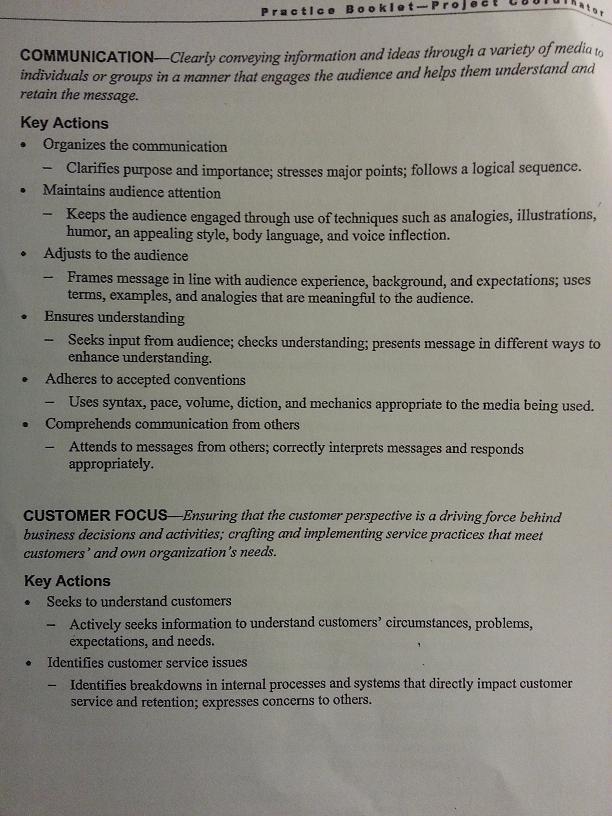
Competences or targets:Communication and customer Focus
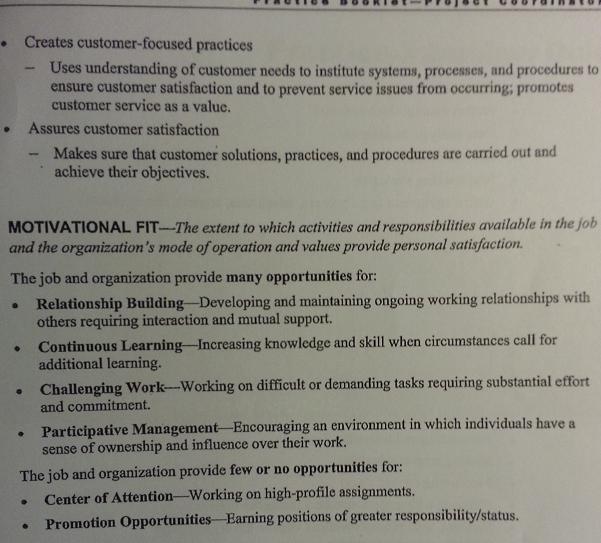
Competences or targets:Motivational fit
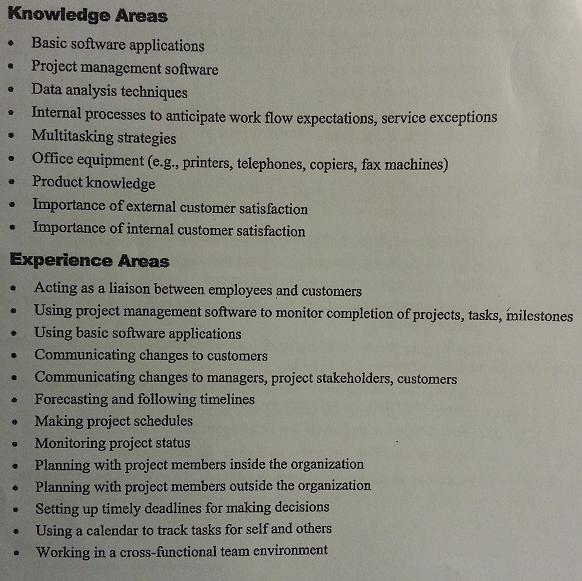
Competences or targets: Knowledge and experience area
STEP3: Interview practice or Structured interview

STEP3 1Practice interview guide
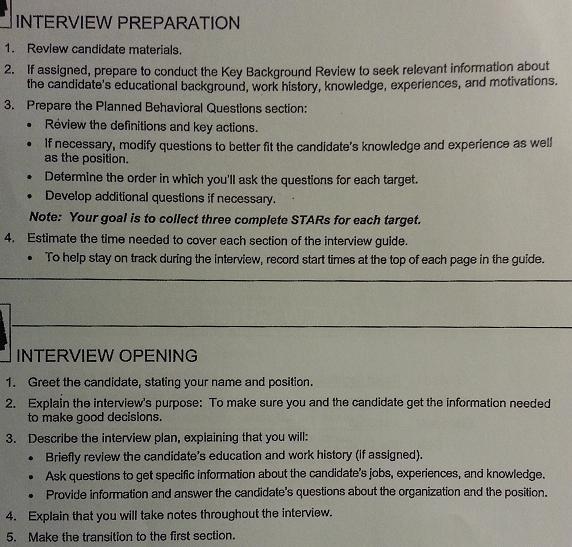
STEP3 2 0Interview preparation and opening
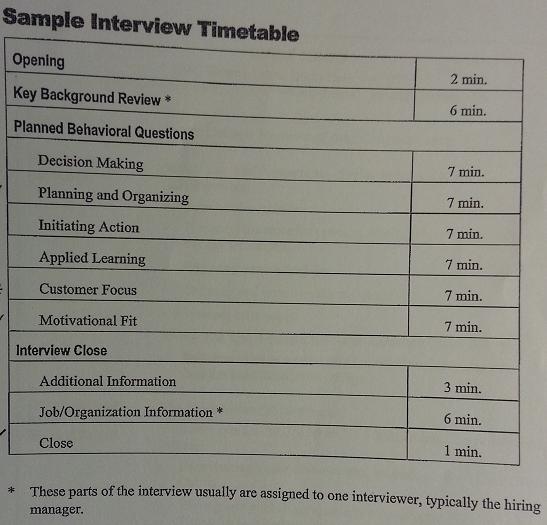
STEP3 2 1Interview timetable
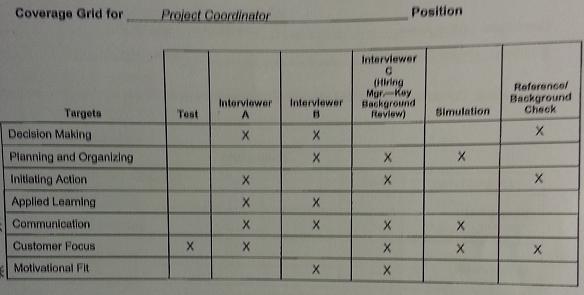
STEP3 2 2Structured interview design

STEP3 2 3Rating grid
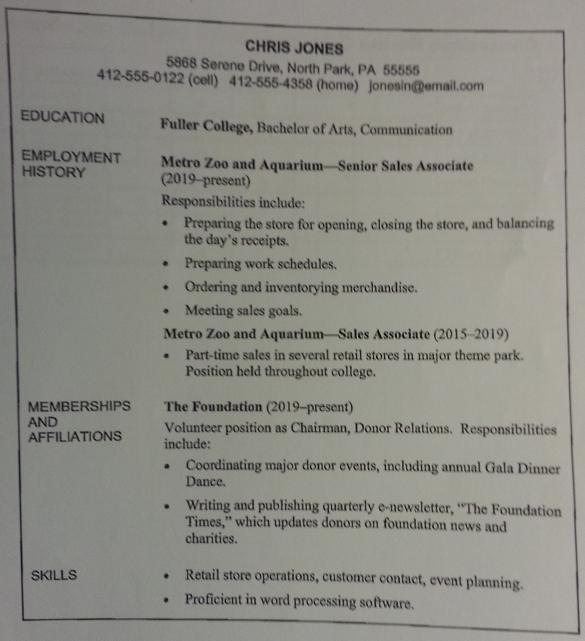
STEP3 2 4Chris resume

STEP3 3KBR KEY background review

STEP3 4PBQ planning and organising
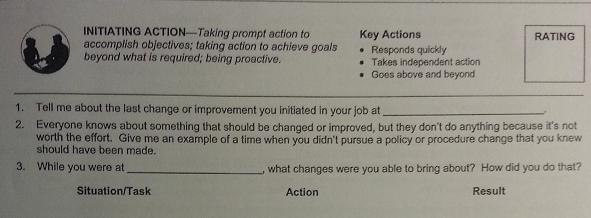
Follow up questions to build complete STAR(Situation/Task/Action/Result)
For Situation/Task:
Describe a situation when...
Why did you...?
What were the circumstances surrounding...?
What were you reacting to?
For actions:
Exactly what did you do?
Describe specifically how you did that.
What did you do first? Second?
Describe your specific role.
Walk me through the steps you took.
For result:
What was the result?
How did it work out?
What happened as a result?
What feedback have you gotten?
STEP3 5 PBQ Initiating Action
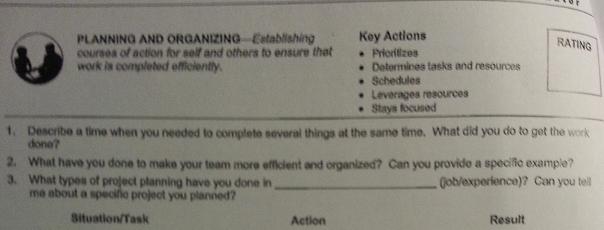
For situation/Task:
Describe a situation when...
Why did you...?
What were the circumstances surrounding...?
What were you reacting to?
For actions:
Exactly what did you do?
Describe specifically how you did that.
What did you do first? Second?
Describe your specific role.
Walk me through the steps you took.
For result:
What was the result?
How did it work out?
What happened as a result?
What feedback have you gotten?
STEP3 6PBQ planning and organization

STEP3 7PBQ Motivational fit
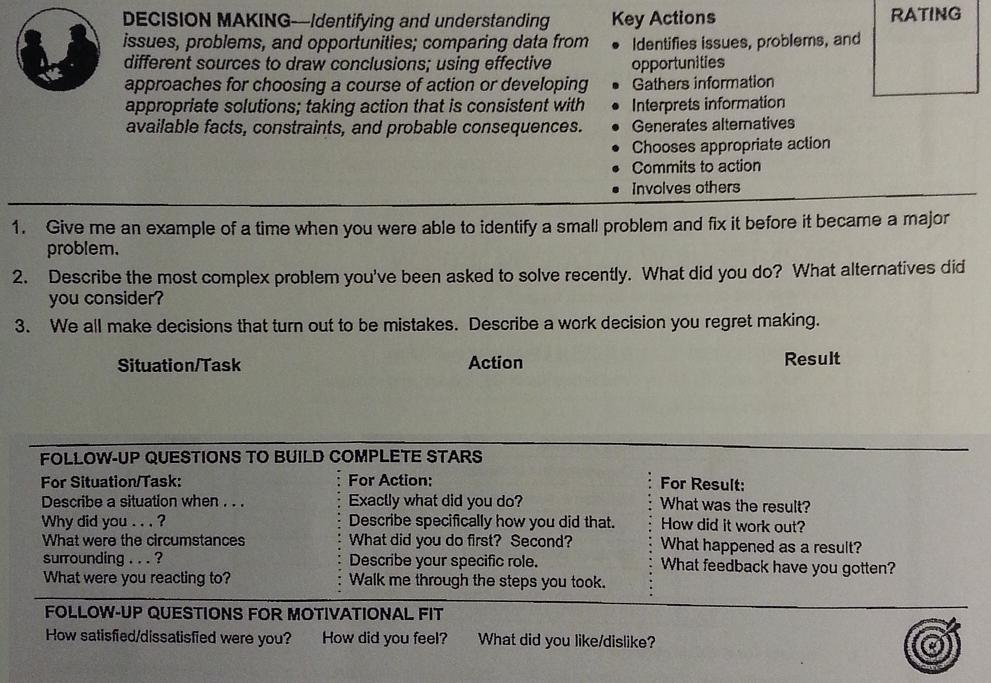
STEP3 8PBQ Decision making
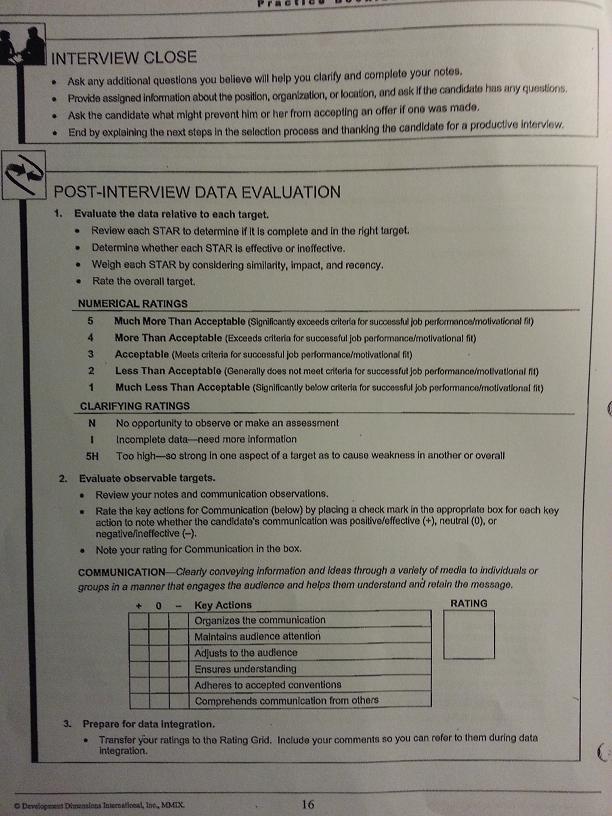
STEP4 1Close and evaluation
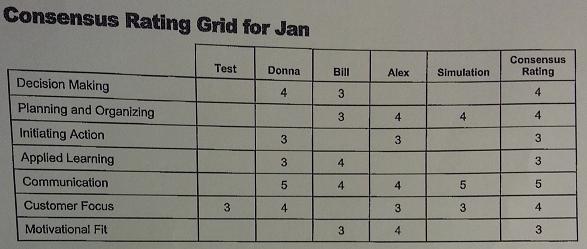
STEP4 2Consensus rating grid for JAN
Leonardo Da vinci Bridge challenge
Use 15 sticks or chopsticks to build one bridge named Leonard Da Vinci Bridge without any other material such as glue, nail etc. Just place the 15 sticks together to build the Bridge.
Method to improve morale
In fact, only four steps you can improve the team's morale. Many times, the morale was ruined by unclear activity. Once low morale is noticed, we immediately need to confirm whether something needs to be clarified including the strategy and target etc. If everything is clear, we need to confirm whether BECKS are met or in control. BECKS are the abbreviations of behaviour, environment, clarity, knowledge and skills. We need to control everything related to target on track besides BECKS. If met, the third thing is that whether the team buy in the initiative, advocates or taskforce which is named belief. The final factor which affects morale is benefit. Benefit is the basic need of human being.
We also can name the above mentioned as morale grid which can be generalized as four words: Clarify, control, belief and benefit.
How to Reduce Employee Turnover
If you want to have an effective hiring campaign, you have to think long term. When hiring new employees, it can be difficult to consider how they will benefit your organization for the long haul. Fortunately, there are a variety of ways to make sure you pick the right employees who will stay with your company. The following are instructions on how to prevent quick employee turn-around.
STEPS
- Listen, listen, listen. Money is one of the least common reasons for turnover (lower pay scale positions are sometimes exceptions) so if you are experiencing a high turnover, throwing money at the problem will not make it go away (although it might hide the problem for a while). Debrief employees that quit and find out the "why" behind their decision. If you continue to allow the employees to leave without any efforts or actions to stop it, you effectively create a culture that becomes the norm in your business.
- Offer employees the option of cross-training. Though there are many employees who only want to know their own job, many get bored and like the challenge of learning new skills. Having employees who know more than just their own job benefits both you and them. If you lose an employee, you have others who can step in and take their place. If a job position gets phased out, the employee can move to a new area with the skills they have acquired! Though many employees may not take you up on your offer to cross-train them, some will.
- Employees who feel a sense of ownership of the organization are less likely to leave. Create a sense of ownership by giving responsibility to employees. Make their duties look like responsibility and not just another activity. Express appreciation regularly. Reward success especially jointly, making everyone feel they contributed to the joint success. Employees who feel appreciated and successful are less likely to leave.
- Give awards and rewards for achievement. Awards can be items such as employees’ pins for good attendance or cash incentives for increased department productivity. You can also offer some form of extra pay as a reward, or free company merchandise. However, stay away from incentive programs that pit employees against one another, as the resulting competition can yield tension and bad faith.
WARNINGs
While low employee turnover can be beneficial in some respects, a near-zero employee turnover is actually counterproductive. Turnover is good for filtering out stale company standards by bringing in workers with fresh, new ideas.
Situational leadership
Tell: To a new team member, he lacks the knowledge and have a good will to do thing, we just tell/order them to do.
Sell: To a junior team member, he still lacks the knowledge and has low will to do thing, we need to teach him to do things.
Coach: To a senior team member, he has the knowledge and has low will to do thing with a poor result, we need to coach him to do things.
Delegate: To a mature team member, he has both the knowledge and will to do things, we delegate the things to him letting him accumulating experiences.
Successful performance
Successful performance = 1% Process + 99% Spirit. Process includes procedures and tools. Spirit includes behaviours, support and energy.
Third level listening
Level1: Not focused, listener is more interested in waiting for their chance to speak;
Level2: Functional listening...Questioning, eye contact, summarising back;
Level3: Picking up on the unsaid and hidden emotions.



